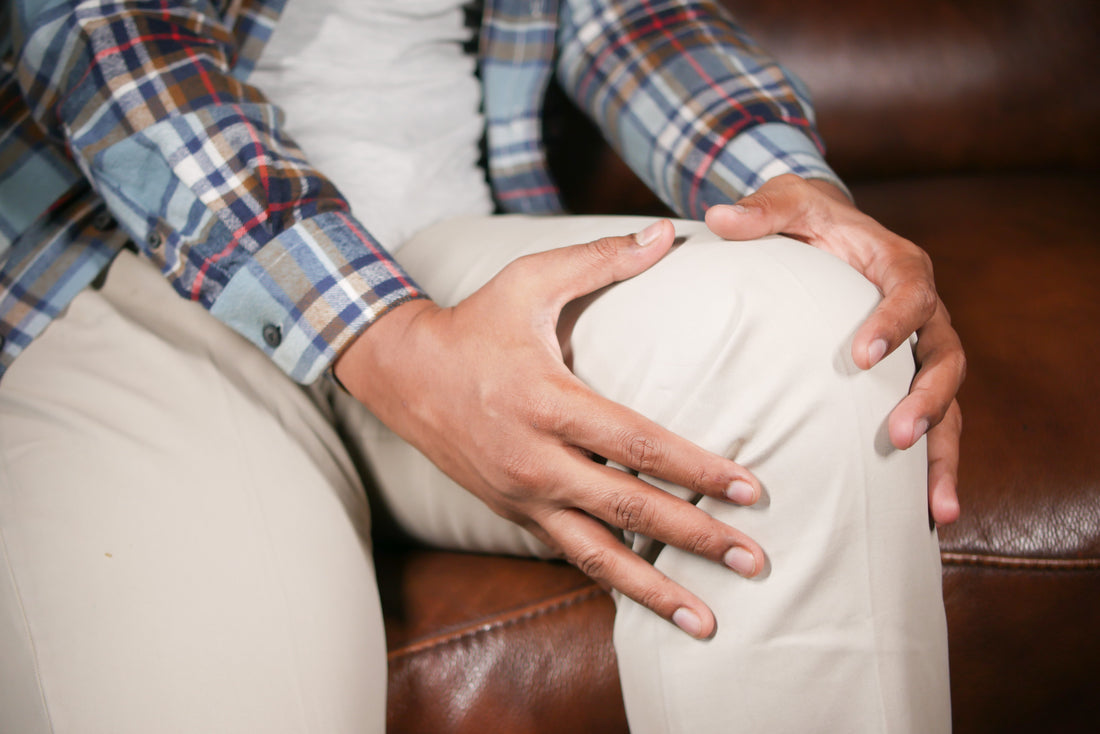Joints are the places in our bodies where two bones meet. They allow us to move by providing a point of articulation between the various bones that make up our skeleton. There are three main types of joints in the human body: ball-and-socket joints, hinge joints, and pivot joints. Each type of joint has a different range of motion.
Unfortunately, they can also be a source of pain when they become inflamed or damaged.
In this blog post, we'll explore some of the most common causes of joint pain and what you can do to find relief.
Acute Joint Pain
Joint pain is a common problem that can be caused by a variety of factors. It can be acute (short-term) or chronic (long-term). Let’s review some common examples of acute joint pain/
Injury
A sudden injury, such as a sprain or fracture, can cause acute joint pain. However, even after the initial injury has healed, you may experience chronic joint pain due to damage to the surrounding tissues.
Overuse
Repeating the same motion over and over again can put strain on the joints and surrounding muscles, leading to inflammation and pain. This is often seen in athletes or people who have physically demanding jobs.
Infection
Bacterial or viral infections can sometimes cause joint pain as well as swelling, redness, and warmth in the affected area. Septic arthritis is a serious infection that requires immediate medical treatment.
Acute joint pain is a pain that usually goes away after a few days. In some cases, acute joint pain may be a sign of a more serious condition, such as arthritis. If the pain lasts for more than a few days or is accompanied by other symptoms, it is important to see a doctor for diagnosis and treatment.
Chronic Joint Pain
Understanding chronic joint pain, and how it differs from the acute, is very important. It will allow you to find more effective pain relief options.
Arthritis
Arthritis is a general term used to describe any condition that results in inflammation of the joints. The two most common types of arthritis are osteoarthritis and rheumatoid arthritis. Osteoarthritis is caused by the breakdown of cartilage, which is the tissue that cushions the ends of our bones. Rheumatoid arthritis is an autoimmune disorder that causes the body's immune system to attack healthy tissue, including the joints.
Bursitis and Tendinitis
Bursitis is another condition that results in inflammation, but in this case, it's the bursa—a small sac filled with fluid—that becomes inflamed. The bursa acts as a cushion between bone and tendon (the tissue that connects muscle to bone), so when it becomes inflamed, it can cause pain at the joint.
Tendinitis is very similar to bursitis, but instead of affecting the bursa, it involves inflammation of the tendons themselves. This can lead to pain and stiffness around the affected joint.
Gout
Gout is yet another form of arthritis, but unlike osteoarthritis and rheumatoid arthritis, which can affect any joint in the body, gout usually only affects one joint at a time—most often the big toe. Gout occurs when uric acid builds up in the blood and forms crystals around the affected joint. These crystals can cause severe pain and inflammation.
Preventing Joint Pain
While there are many different causes of joint pain, some of the best ways to prevent it include maintaining a healthy weight, exercising regularly, and avoiding injury. Obese and overweight individuals are at a higher risk for joint pain because of the added strain on their joints. Exercise helps to keep joints healthy by strengthening the surrounding muscles and ligaments. It is important to choose low-impact exercises that do not put too much stress on the joints, such as swimming or biking.
In addition, taking measures to avoid injury can help to prevent joint pain. This might include using proper form when lifting weights and wearing protective gear when playing sports. By following these tips, you can help to reduce your risk of developing acute or chronic joint pain.
Relieving Joint Pain
There are many ways to find relief from joint pain. Common methods include:
- over-the-counter medications like ibuprofen or naproxen
- ice or heat therapy
- weight loss for those who are overweight or obese
- physical therapy exercises that stretch and strengthen the muscles around your joints
Natural Supplements
Supplements can be a very effective way to treat joint pain. Our FlexiQule products utilize properties of Boswellia and Ginger. FlexiQuleTM is natural, scientifically developed, clinically tested and has no known side effects. Visit our online shop to learn more!
If you're unsure about what's causing your joint pain or how to best treat it, be sure to consult with your doctor or another medical professional for guidance.

